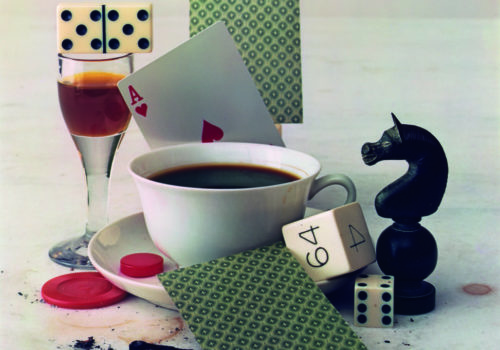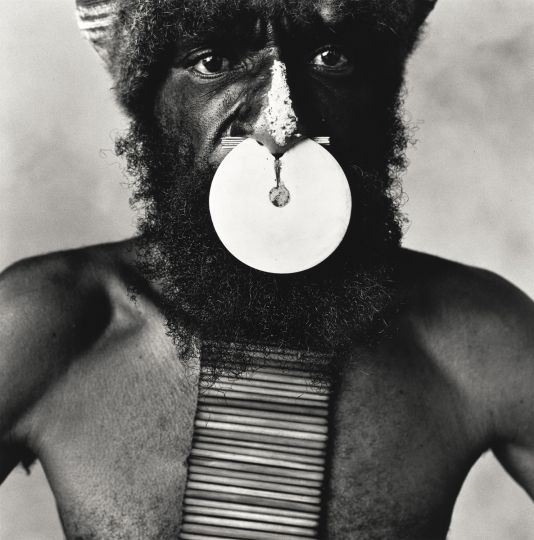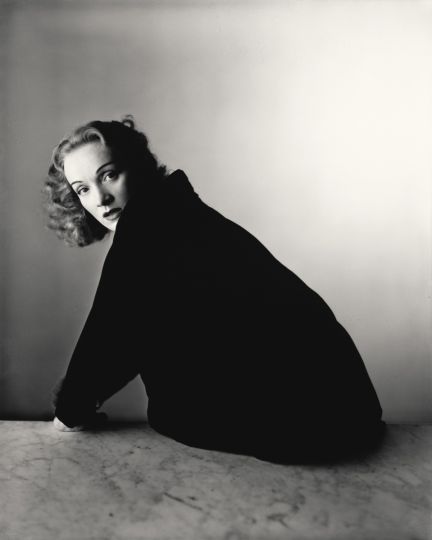To mark the centenary of Irving Penn’s birth, The Metropolitan Museum of Art has open its doors in April to a major exhibition celebrating one of the foremost photographers of our time. With more than 200 prints on display (the majority a recent gift to the museum from The Irving Penn Foundation), the retrospective is the most substantial to date and explores every period in Penn’s prolific 70-year long career. From New York the exhibition will then travel internationally with a first stop at the Grand Palais in Paris in September.
The publication of the accompanying book Irving Penn: Centennial is an occasion in itself. Not only does it feature the largest selection of Penn photographs ever compiled, including works that have never been published, it also provides essays with a fresh intellectual understanding of the deeply private artist and the human being behind the masterful photographs. The book and exhibition are created and co-organized by Maria Morris Hambourg, who founded the Met’s Department of Photographs in 1992 and knew Penn personally, and Jeff L. Rosenheim, the department’s current Curator in Charge.
The two curators were asked to select three images each from the exhibition and reflect upon them with Luncheon magazine’s editor in chief and creative director Thomas Persson. The interviews here provide fascinating insight into the artistic creation and circumstances in which these photographs were made. From Marlene Dietrich to a tribesman in New Guinea; a female nude and a still life for Vogue; a fishmonger in London and two cigarette butts – Penn’s wide-ranging subjects were all part of his worldly narrative and, as they are observed within these pages, his profound talent for storytelling.
Today, we present the fourth part of this series with words on After-Dinner Games, New York, 1947.
Jeff L. Rosenheim: In this wonderful still life, every element visually touches every other element. Even the corner of the numbered die kisses the chess figure; it rests against the playing card; the card touches the coffee cup and saucer; etc. The picture offers us a charming lesson on how to read all of Penn’s photographs. Much of the work is about touch, weight, and equipoise. Penn uses these elements to subtly move our eyes around his compositions. The way this works here is fascinating. The number 64 die meets the die with the pips that count six and four. Six and four added together makes ten, which Penn incorporates on the domino piece using the double five. And so on with both colour and shape. Of course, most viewers may not look at the photograph in this way, but similar visual resonances are in play in the other still lifes, the fashion studies, the portraits, even in the nudes. How Penn constructs his photographs — the elegant puzzle of each composition — contributes to their meaning and quiet drama. You can really see Penn establishing his core visual methodology in After-Dinner Games. It is something that he will use throughout his entire career. Perhaps this is why he seems to have been most passionate and devoted to the idea of the still life: it is hiding everywhere in his work.
Thomas Persson: The burnt matches, the stains and the cigarette ashes are the opposite of the perfectionist, sleek glamour that was Vogue at the time, yet these elements of detritus became a signature for Penn…
Jeff L. Rosenheim: Like many artists, Penn was interested in what is left after most of what was once there is gone. We can view it as detritus or see it as existence: lipstick on a glass, a burned match. They are signs of life; they stand in for the whole; they are fragments that we as viewers have to put back together. This is the essence of visual storytelling, or narrative, and something to which we pay attention, intellectually and emotionally. One of the reasons we seem to appreciate broken classical sculpture — generally we are not too bothered if the figure’s legs are missing, or even the head — is because in what remains, even in just a fragment, we feel the presence of the artist, the hand of the maker, AND the passage of time. This is visually alluring and intellectually provocative. Penn’s early compositions are constructed to evoke the aftermath of some sort of human activity. Is detritus the opposite of high fashion perfection? Perhaps, but even in his portraits he could have used a very ne carpet underneath the figures…
Thomas Persson: But he didn’t…
Jeff L. Rosenheim: He didn’t and he must have felt that the idea of true perfection was an impossibility. Or it would be read as trite or an essentially minimal idea. It is hard to achieve, and when an artist achieves it, the effect can seem obvious. Detritus adds texture to the pictures, an unravelling of things that the eye has to accommodate. It’s the savoury to go with the sweet. It’s the humility of the artist coming through. We have to remember that in most all the other pages of the magazine were advertisements and photographs that had a kind of distilled beauty. What is important to Penn about allowing these fragmentary elements to be visible is that they hold the readers’ attention just long enough that they might reconsider turning the page for another precious few moments.
Thomas Persson: Penn was part of Alexander Liberman’s ambition to modernize Vogue, shaking up what was then a rather genteel society journal. Not everyone, including Vogue’s long-time editor Edna Woolman Chase, understood these pictures when they were hot off the press. What can we say about life in New York in 1947 from this image?
Jeff L. Rosenheim: Let’s remember that these still life photographs were made and published in the immediate post-war years. The world had fallen apart and was slowly being put back together. Perhaps one reason Penn allowed these elements of decay to enter his photographs is to subtly evoke the memory of war, of things falling apart.
Thomas Persson is the editor in chief and creative director of Luncheon. Jeff L. Rosenheim is the Curator in Charge at the Metropolitan Museum, in New York.
Irving Penn : Centennial
April 24 to July 30, 2017
The Met, Gallery 199
1000 5th Ave
New York, NY 10028
USA



















